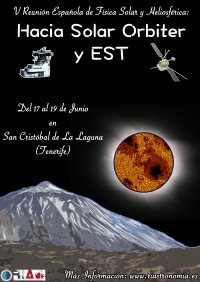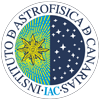Towards Solar Orbiter and EST

The network of astronomical infrastructures (RIA) and the Astrophysics Institute of the Canaries (IAC) are organizing the V Spanish Meeting on Solar and Heliospheric Physics which will take place in La Laguna, (Tenerife) from 17th to 19th June 2015. The aim of the meeting is to consolidate the collaborations between the various Spanish groups which work in the different branches of research in Solar and Heliospheric Physics, to optimize the use of: Solar Orbiter and EST. Both projects are being supported by the Severo Ochoa program at the IAC
Starting date: 17 jun 2015 - 9:00
End date: 19 jun 2015 - 19:00
Location: Casa-Albar, La Laguna, Tenerife.
Organizer: Red de Infraestructuras de Astronomía & IAC
The NASA/ESA Solar Orbiter space probe is unique because it will carry the first combination of instruments for measuring both locally and remotely which will orbit the Sun with a perihelion close to the radius of the orbit of Mercury (0.29 astronomical units) and rising form the plane of the ecliptic by 28 degrees. .
The Spanish scientific community is strongly and directly involved in the development of this mission: it participates in, and leads, the development of two of its instruments the EPD detector (Energetic Particle Detector), and the SO/PHI magnetograph (Polarimetric and Helioseismic Imager for Solar Orbiter). The launch date for the mission is planned for 2018 and the probe will start to send back data three years later, once it reaches the correct orbit. The nominal duration of the mission is three years (until 2024), with three additional years in an extended phase (until 2027). .
The EST is at the present time the most ambitious European ground-based project. It will be a telescope with 4m diameter, designed specifically to measure the solar photospheric and chromospheric magnetic fields with high precision, with a resolution on the solar surface of 30 km. From the beginning Spain has played an important role in this initiative, presiding the consortium since its creation towards the end of 2012, and in the development of the EST (coordinating the European projects EST, SOLARNET, and the recently approved project GREST). According to present plans the construction of the EST will start around 2020 and it will start to yield data around 2026, with its instruments initially in the science verification phase.


